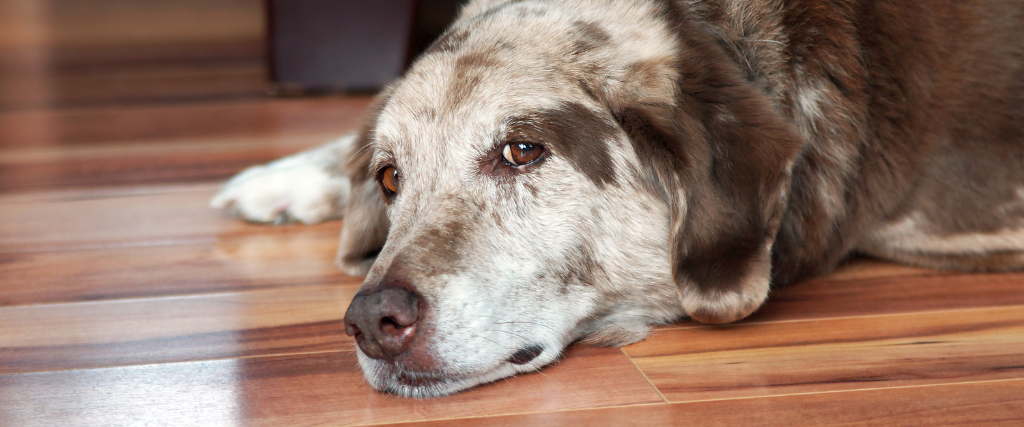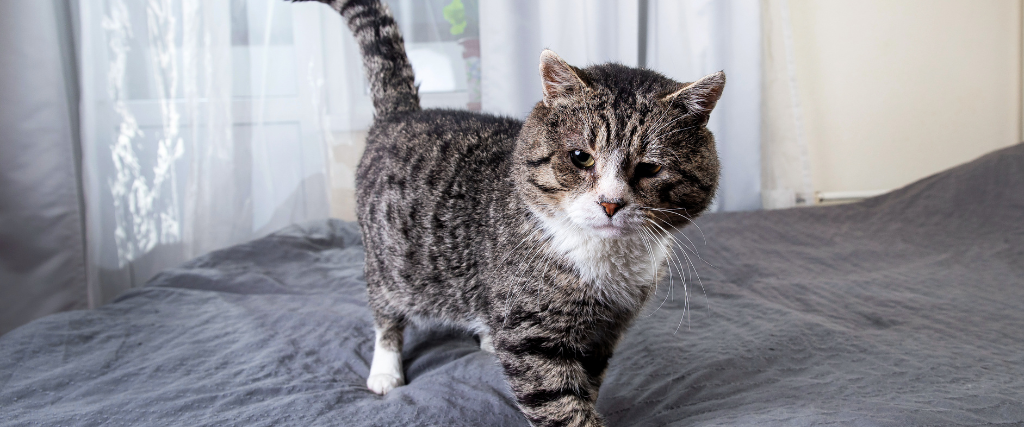As pets age, they experience several physical changes. Some of these changes, like hearing loss, may seem sudden, and others are more subtle, such as arthritic changes. The changes you may see with your aging pet can often not be cured, but they can often be managed to help your pet feel more comfortable.
Noticeable Changes In Your Senior Pet
Nutrition
Just like people, as pets age, their nutritional requirements change due to decreased metabolism and reduced exercise. Most senior pets need their calories cut by about 20% without any change in exercise. Their energy requirements may decrease by another 10% with reduced exercise. It is essential to monitor your pet’s weight as they get older. Increased weight makes it harder for older pets to move around and can lead to other health issues and a shorter life span. Talk to your veterinarian about the nutrition and calories that your senior pet may need.
Skin Toughening
Elbow callouses are another thing commonly seen in dogs as they age. This is because they are not as active and are lying around more. The elbows are pressure points when a dog is lying down, which is why the callouses form. Callouses more commonly form when a dog lays mostly on hard surfaces. Ensure your dog has a soft place to lay on, like an orthopedic dog bed.

Coat Changes
As your pet ages, you may start seeing gray hair. This tends to be more common in dogs than cats and is often seen on their face more than any other body part. Dogs and cats can also start developing more skin tumors. These tumors can be benign or cancerous. It’s important to have new masses looked at by your veterinarian to determine if they are cancerous or not and if they need to be removed.
Arthritis
Arthritis is a huge issue that most animals experience as they age. Owners make the mistake of thinking that their pet will cry or make other sounds of discomfort if they are painful. An animal will rarely do this. Signs of arthritis include not getting on and off furniture anymore, difficulty getting into a car, not jumping onto things that they usually jumped on to, going up the stairs on a diagonal, limping, and losing muscle mass. You may find your cat is going to the bathroom outside the litterbox. This can be a sign of arthritis pain, making it difficult for your cat to get in and out of the litterbox. You may want to try a different litterbox with lower sides and ensure your cat doesn’t need to go up or down stairs to get to the litterbox. You should discuss arthritis with your veterinarian and decide which course of management works best to manage your pet’s pain.
Nail Care
Since senior pets are less active, another change you may see is that your pet’s nails may become more brittle and more prone to breaking. The best way to handle this is with frequent nail trimming. Nails will also get longer and quicker in senior pets due to walking around less.
Bathroom Behaviors
You may see changes in bathroom habits as well with your senior pet. Dogs, especially female dogs, may start leaking urine while lying down. This problem can be managed with medications. You may also see fecal incontinence in both cats and dogs. This is typical since it is uncomfortable or even painful for senior pets to posture when defecating. As a result, they do it less frequently, which can lead to fecal incontinence or, in cats, defecation outside the litterbox. Cats tend to suffer from constipation more than dogs. If you notice less fecal material in the litterbox or the feces you find are dehydrated and hard, your pet may suffer from constipation and need changes in their diet or medication to help.

Hearing Loss
Hearing loss is a common thing that we see in senior pets. It often seems like a sudden change, even though the onset is slow. As owners, it looks sudden because we don’t recognize hearing loss until it is advanced. Abnormal barking when approaching your pet may be an early sign of hearing loss. They will bark because they didn’t hear you approaching and you startled them. Another sign of hearing loss is when they don’t listen to commands. There is no good way to test for hearing loss, and it’s not reversible, but using a flashlight for signaling your pet or vibrations (i.e., stomping your foot) is a way to try and communicate with them.
Sight Changes
Eye changes are another thing we see in senior pets. Your pet should have their eyes checked at their annual exam. Owners will often notice a haziness in their pet’s eyes, which may be cataracts. It can also be another eye condition called nuclear sclerosis, which doesn’t affect vision like cataracts. Your veterinarian can differentiate between the two. Although we can never know how well an animal can see since they can’t read an eye chart, we can know if they are visual. If you notice your pet is running into things, this could be a sign that your pet is blind. If your pet has sudden blindness, contact your veterinarian immediately since many diseases can contribute to sudden blindness.
These are just a few things you may see as your pet ages. Many health issues can develop as your pet ages. Your pet must see their veterinarian at least once a year, even if they seem okay. Animals are masters at hiding issues until they become big problems. If issues are found early, things can be done to make your pet more comfortable.
As always, if you have any concerns or questions about your senior pet, give us a call at 734-453-0485 or send us an email at [email protected]

